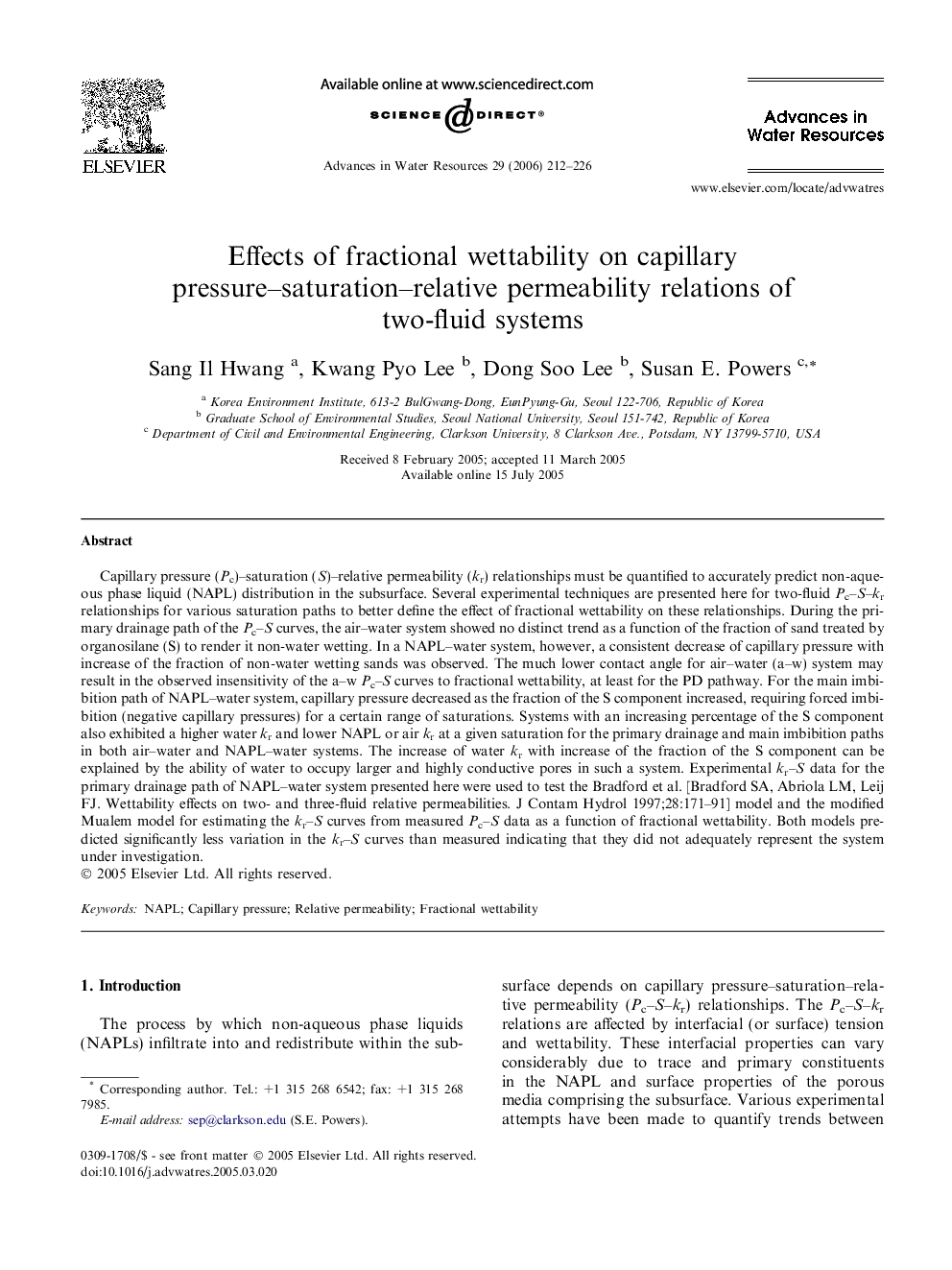| Article ID | Journal | Published Year | Pages | File Type |
|---|---|---|---|---|
| 4527074 | Advances in Water Resources | 2006 | 15 Pages |
Capillary pressure (Pc)–saturation (S)–relative permeability (kr) relationships must be quantified to accurately predict non-aqueous phase liquid (NAPL) distribution in the subsurface. Several experimental techniques are presented here for two-fluid Pc–S–kr relationships for various saturation paths to better define the effect of fractional wettability on these relationships. During the primary drainage path of the Pc–S curves, the air–water system showed no distinct trend as a function of the fraction of sand treated by organosilane (S) to render it non-water wetting. In a NAPL–water system, however, a consistent decrease of capillary pressure with increase of the fraction of non-water wetting sands was observed. The much lower contact angle for air–water (a–w) system may result in the observed insensitivity of the a–w Pc–S curves to fractional wettability, at least for the PD pathway. For the main imbibition path of NAPL–water system, capillary pressure decreased as the fraction of the S component increased, requiring forced imbibition (negative capillary pressures) for a certain range of saturations. Systems with an increasing percentage of the S component also exhibited a higher water kr and lower NAPL or air kr at a given saturation for the primary drainage and main imbibition paths in both air–water and NAPL–water systems. The increase of water kr with increase of the fraction of the S component can be explained by the ability of water to occupy larger and highly conductive pores in such a system. Experimental kr–S data for the primary drainage path of NAPL–water system presented here were used to test the Bradford et al. [Bradford SA, Abriola LM, Leij FJ. Wettability effects on two- and three-fluid relative permeabilities. J Contam Hydrol 1997;28:171–91] model and the modified Mualem model for estimating the kr–S curves from measured Pc–S data as a function of fractional wettability. Both models predicted significantly less variation in the kr–S curves than measured indicating that they did not adequately represent the system under investigation.
